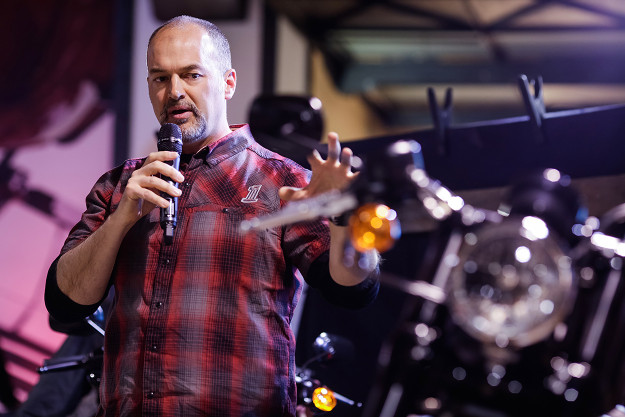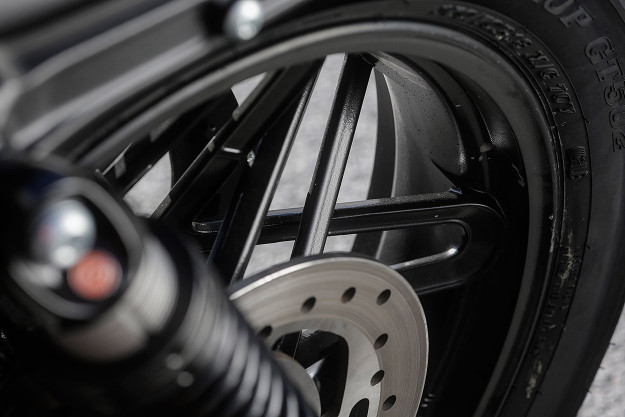
When Harley-Davidson Europe invited us to ride their latest Sportster, we were skeptical. They wouldn’t tell us anything about it—revealing only that it was part of their Dark Custom line, and that we’d like it.
After all, we’re not really your typical Harley folk. But a quick look over our stats revealed that the bar and shield is the fifth most represented marque on these pages.

So we said “Yes”—and breathed a cautious sigh of relief when details of the new Roadster emerged, just days before departure.
For the uninitiated: Dark Custom is a range within the HD line, launched in 2008. It’s aimed at a new generation of customer—with bikes that are minimal, raw and open to interpretation. Bikes like the Forty-Eight, or the best-selling Iron 883.

The Roadster takes this a step further. Its sits higher and straighter than any other Sportster, with inverted forks and dual front discs. It’s not your old man’s Sporty.
I asked Harley’s people: Why did you create the Roadster? Paul James (below), head of product planning, said: “The brand can stretch in ways we haven’t tried yet.” The inference was clear: There’s a larger audience out there, and Harley wants to speak to them.

Brad Richards (Styling, Creative and Design Director) and Ben McGinley (the designer behind the Roadster) were even more upfront. Their ultimate goal was to build a rider’s bike, with the 1956 KHR flat tracker cited as an influence.

Styling
The Roadster’s biggest draw card is its balanced stance—which is mostly down to its suspension and wheels. It’s sporting similar preload-adjustable, emulsion-style rear shocks to the Forty-Eight—but with increased travel.
The forks are 43mm and inverted, with cartridge damping. And burly new triple clamps make for an aggressive front-end, along with dual stoppers and a trimmed front fender.

The wheels are cast alloy units: 19 inches up front, with an 18-inch rear for an extra kick in the tail.
They’re a unique design that warrants close inspection; an offset and split pattern that mimics traditional laced wheels.

Harley-Davidson’s designers have cherry picked ideas from the 60s right through to the 80s to stylize the Roadster.
Up top is the same 3.3 gallon (12.5 liter) ‘walnut’ tank as the Iron 883. Right behind it is one of my favorite bits: The newly designed seat. It’s got a definite muscle car aesthetic, with a mix of perforated and solid upholstery, and horizontal pads said to echo the look of old motorcycle jackets.
The rear fender uses the standard Sportster stamping, but with the shortest trim in the range.

The cockpit area tickled my fancy too. It’s one of the cleanest I’ve seen on a factory motorcycle—with a tiny, tucked light and a small, round dial.
The dial really is a standout feature, combining an analogue tacho with a digital speedo and readout. It’s integrated with the top bar clamp, which includes a discreet row of ‘idiot’ lights. My only criticism is that the LED display was tricky to read in bright sunlight (something that Harley-Davidson is apparently aware of and working on).

The bars are also unique to the Roadster. They’re the standard Harley 1-inch affair, but with a bend that points ever so subtly towards a café racer setup. I’m not a fan of the stock grips, but I’ll take the neat Sportster mirrors, and I’ll live with the bulky (yet effective) switchgear.
Finishing touches include rear turn signals that double up as taillights, a license plate bracket that can easily be ditched, and simple twin barrel mufflers. There are also slatted finishes on the exhaust heat shields and belt guard, for that race look, and a finned timing cover bearing the ‘1200’ motif.